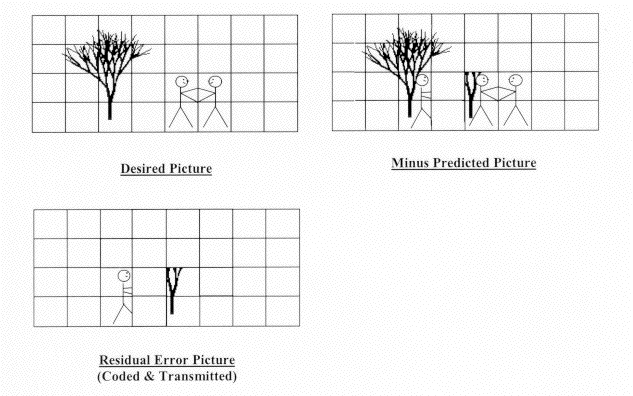To decode a bitstream generated from the encoder of Figure 7.20, it is
necessary to reverse the order of the encoder processing. In this manner, an I frame
decoder consists of an input bitstream buffer, a Variable Length Decoder (VLD), an
inverse quantizer, an Inverse Discrete Cosine Transform (IDCT), and an output interface
to the required environment (computer hard drive, video frame buffer, etc.). This
decoder is shown in Figure ![]() .
.

Intra Frame Encoding

Intra Frame Decoding
The VLD is probably the most computationally expensive portion of the decoder because it must operate on a bit-wise basis (VLD decoders need to look at every bit, because the boundaries between variable length codes are random and non-aligned) with table look-ups performed at speeds up to the input bit-rate. This is generally the only function in the receiver that is more complex to implement than its corresponding function within the encoder, because of the extensive high-speed bit-wise processingnecessary.
The inverse quantizer block multiplies the decoded coefficients by the corresponding values of the quantization matrix and the quantization scale factor. Clipping of the resulting coefficients is performed to the region 2048 to +2047, then an IDCT mismatch control is applied to prevent long term error propagation within the sequence.
The IDCT operation is given in Equation 2, and is seen to be similar to the DCT operation of Equation 1. As such, these two operations are very similar in implementation between encoder and decoder.